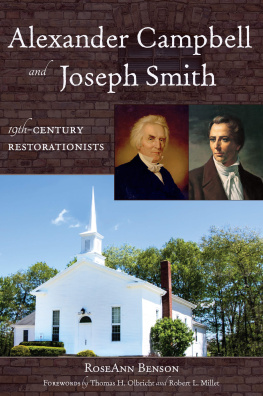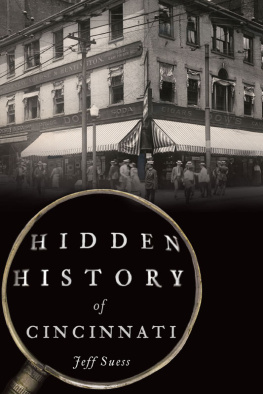Published by The History Press
Charleston, SC
www.historypress.com
Copyright 2020 by the Plano Conservancy for Historic Preservation
All rights reserved
Front cover and back cover, top: Plano Public Library.
First published 2020
E-book edition 2020
ISBN 978.1.43966.935.8
Library of Congress Control Number: 2019954257
print edition ISBN 978.1.46714.294.6
Notice: The information in this book is true and complete to the best of our knowledge. It is offered without guarantee on the part of the authors or The History Press. The authors and The History Press disclaim all liability in connection with the use of this book.
All rights reserved. No part of this book may be reproduced or transmitted in any form whatsoever without prior written permission from the publisher except in the case of brief quotations embodied in critical articles and reviews.
CONTENTS
Frances Imogene Gene Jackson Edwards March 8, 1939March 9, 2019
In 2019, we mourned the passing of a great Texan, Gene Edwards. Gene was one of Planos pioneers of historic preservation and was instrumental in saving the George House, which was located on what is now the site of Plano Municipal Center. The George House has been moved to Old City Park in Dallas. Gene was also instrumental in preserving the Texas Electric Railway Plano Station (now the Interurban Railway Museum).
Gene and her husband, Jim, owned the iconic Carpenter Edwards House at 1211 16th Street, which was the home of Planos first mayor, Gip Carpenter, and became a popular wedding venue in the 1990s2000s. Jim Edwards served as mayor of Plano for two terms from 1978 to 1982.
Gene was also chairman of the Plano Parks Board in the 1980s and was the first chairman of the City of Planos Historical Commission, now the Heritage Commission.
Gene vowed to celebrate her eightieth birthday on March 8, 2019. When the party was over, she was ecstatic, thankful and very tired. So early that evening, she decided to nap. According to her obituary, With her head and her heart full of dreams and laughter and love and life, of that day and 80 years before, she drifted asleep. And never woke up. Just as she and God had always planned.
The obituary adds that Gene Edwards taught us all how to love, how to be faithful, and how to fight; three traits she remained unmatched in, even until the end. May we all remember her example.
ACKNOWLEDGEMENTS
The authors would like to thank:
Rene Burke Jordan, AICP, park planning manager at the City of Plano, for assistance in the story on Planos oldest tree.
Candace Fountoulakis for researching and writing the chapter on the Collinwood House mystery cornerstone.
Jessica Woods of the Plano Conservancy for Historic Preservation, whose careful proofreading of the manuscript saved us from embarrassment.
Jennifer Shertzer for sharing photos for this volume and for her ongoing dedication to telling the story of Planos rich history in Plano Magazine.
Debbie Calvin for her assistance in assembling the Mayhem on the Interurban exhibit for the Interurban Railway Museum, the source for Death on the Rail.
Harold Larson, president of the Board of the Plano Conservancy for Historic Preservation, for his support of this project.
INTRODUCTION
As a young man, William Faulkner had a revelation: I discovered that my own little postage stamp of native soil was worth writing about and that I would never live long enough to exhaust it.
Faulkner made a conscious effort to treat Oxford, Mississippi, as the seat of his fictional Yoknapatawpha County. I have always found it quite amazing to discover the historic stories and characters in the sphere of where we live and work. The little postage stamp of Plano, Texas, also holds an abundance of historical stories of human triumph and tragedy.
When I first came to work for the Plano Conservancy for Historic Preservation in 2013, I read and researched all of the citys history I could find. One of the first tales I stumbled across was the state championship win of the 1965 Plano Wildcats football team. This was Planos first state championshipand took place just a year after Plano High School integrated in 1964. A school that integrates one year and wins its first football state championship the next? That sounds like a Disney movie. The story of the 1965 Plano Wildcats football team was chronicled in The History Press book Football and Integration in Plano, Texas: Stay in There, Wildcats! Its just one of the fascinating hidden history stories found within the Plano city limits.
We hope you enjoy these stories of Planos hidden history and that youll be encouraged to look for the hidden stories in your own little postage stamp of native soil.
Jeff Campbell
Executive Director, Plano Conservancy for Historic Preservation
A BRIEF HISTORY OF PLANO
Authors note: To really appreciate Plano hidden history, you need an overview of the citys history and development. Heres a short version of Planos past, with a nod to the hidden history with origins in each key period of time.
EARLY SETTLERS (184272)
Population, 1870: 155
Opportunity brings people to Plano from around the world. Its true today, and it was true in the citys earliest days. For Planos first settlers, that opportunity came in the form of land.
In 1841, the Republic of Texas was in financial straits, and its very existence depended on attracting people to settle the vast expanse of land.
Postcard of Plano, Texas, looking east, around 1902. Plano Public Library, Plano, Texas.
Life was hard on the frontier, but a community soon emerged. By 1850, the Plano area had its first school, its first cemetery and a Methodist class, the beginnings of what today is First United Methodist Church of Plano.
Among Planos earliest settlers was Henry Cook, a man in his seventies who led a caravan of settlers to Texas; his legacy is still evident in Plano today. William Forman I became the first official postmaster, and the name Plano was established. Formans son built the oldest house still occupied in Plano today, now home to a shop called the Wooden Spoon. Also built around this time was the Collinwood House, another of Planos oldest existing homes, although its links to Planos earliest history werent discovered until 2014.
Another of Planos first settlers, C.S. Haggard, traveled from Kentucky in a covered wagon, hauling an exceptionally big and strong male donkey named Mammoth Jack. Mammoth Jack went on to sire a line of mules that, by 1866, had earned Plano the moniker of Mule Capital of the World.
The Civil War (186165) brought growth to a standstill in Plano. Union sentiments were strong because most settlers had come from the upper SouthKentucky and Tennesseemaking Collin County one of the few counties in the state to oppose secession. The settlers owned relatively few enslaved persons, and as a result, Collin County developed with more of a Midwestern culture than a southern one, which meant that the area had more artisans and professionals.















